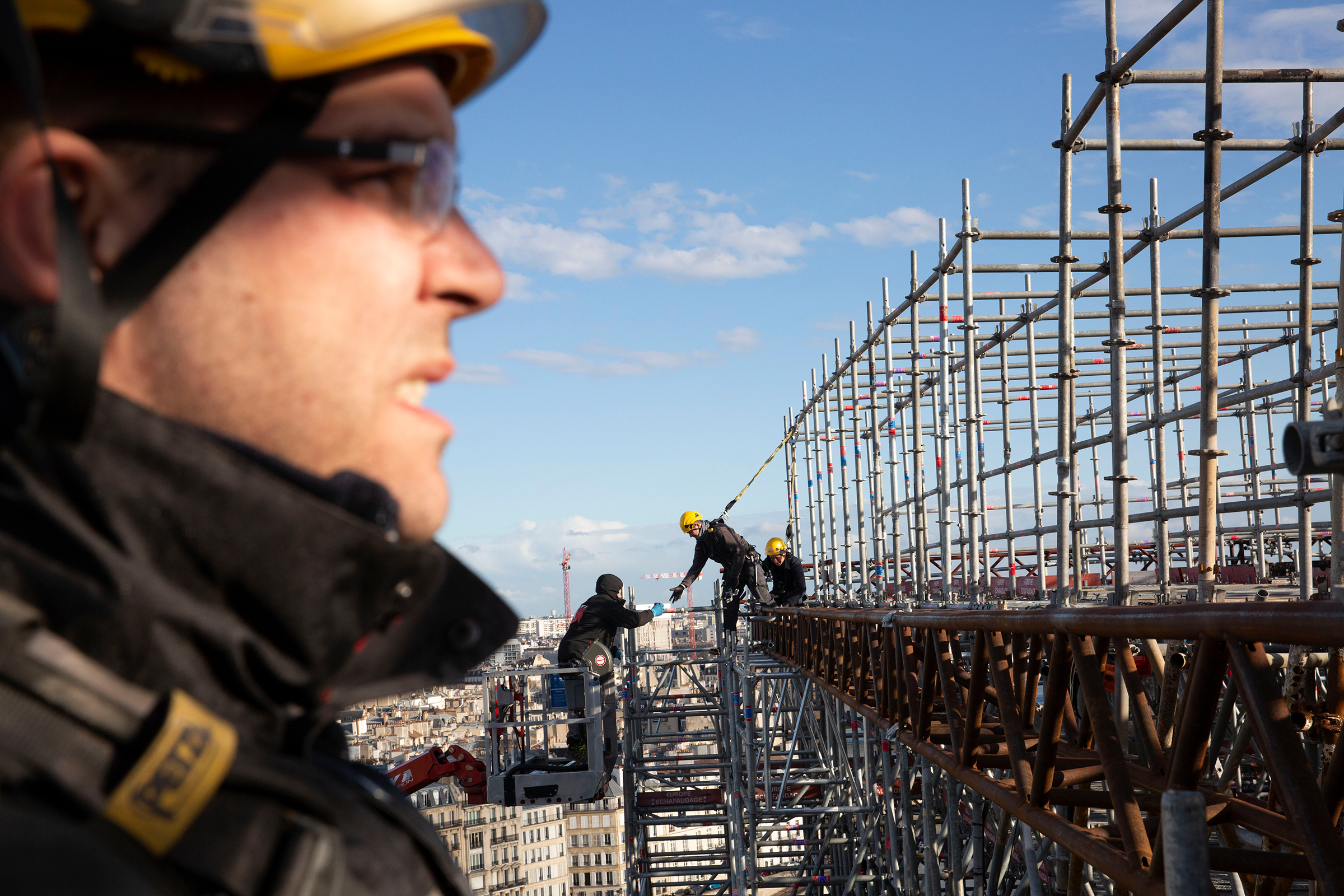Up a set of twisting stone steps in Paris’s Notre-Dame Cathedral, the huge organ sits silent, its pipes coated with fine dust, unplayed for nearly a full year. On the organist’s seat, a musical scorebook lies abandoned, open to a page entitled Semaine Sainte—Holy Week—the festival for which the choir was rehearsing the last time the instrument was used, shortly before the night of April 15, 2019.
That evening at sunset, a tiny spark ignited in the attic level of the vast cathedral, a suspected electrical short circuit. Within minutes, flames whipped through the old oak timbers of the roof and into the stone vault, transforming the upper level of the 850-year-old building into a raging inferno. While the world watched aghast as flames leaped from one of the world’s finest Gothic structures, thousands of people jammed the square and the riverbanks outside Notre-Dame, clutching candles and singing hymns.
They gave a loud gasp when, just before 8 p.m., the 300-foot wooden spire that sat atop the cathedral tilted to the side and snapped off, crashing into the nave far below, and bringing much of the roof down with it, and spreading flames through interior itself. It took more than eight hours for hundreds of firefighters to douse the blaze.
One year on, the city is again convulsed with fear and anguish, this time from another tragedy—the coronavirus pandemic—that, like the fire, seemed to come from nowhere and spread lightning fast and uncontrolled. With 67 million French under a national lockdown since March 17, the cathedral sits shuttered and deserted, bringing to a halt the intensely complex mission of salvaging and reconstructing the Medieval building, on which about 100 engineers, scientists, architects and archeologists have worked for the past year. Nobody knows when it will resume.
“Even today we do not know what the impact will be of the coronavirus,” says retired military general Jean-Louis Georgelin, who was appointed by President Emmanuel Macron to oversee the entire reconstruction of Notre-Dame. Two days after the fire, with France in shock over their cherished cathedral, Macron announced that Notre-Dame would reopen in 2024—the year Paris hosts the Summer Olympics. The ambitious timeframe appeared to work as Macron intended: It galvanized people into action, including bringing pledges of nearly a billion euros in donations for the reconstruction, much of it from major French and U.S. corporations. Until recently, that tight schedule seemed doable. But repeated delays—from high winds, inquiries into lead pollution, and now the coronavirus—have thrown that four-year time frame into doubt.
Among Notre-Dame’s restoration team, none dare tell TIME that the cathedral will not open in 2024. Yet increasingly, they give heavily qualified answers. Some visitors will be allowed in that year, they say, and perhaps Mass will be conducted; they avoid saying how many visitors will be allowed through Notre-Dame’s doors. On Good Friday, April 10, Paris’s Archbishop Monseigneur Michel Aupetit led a short ceremony in a corner of the cathedral.
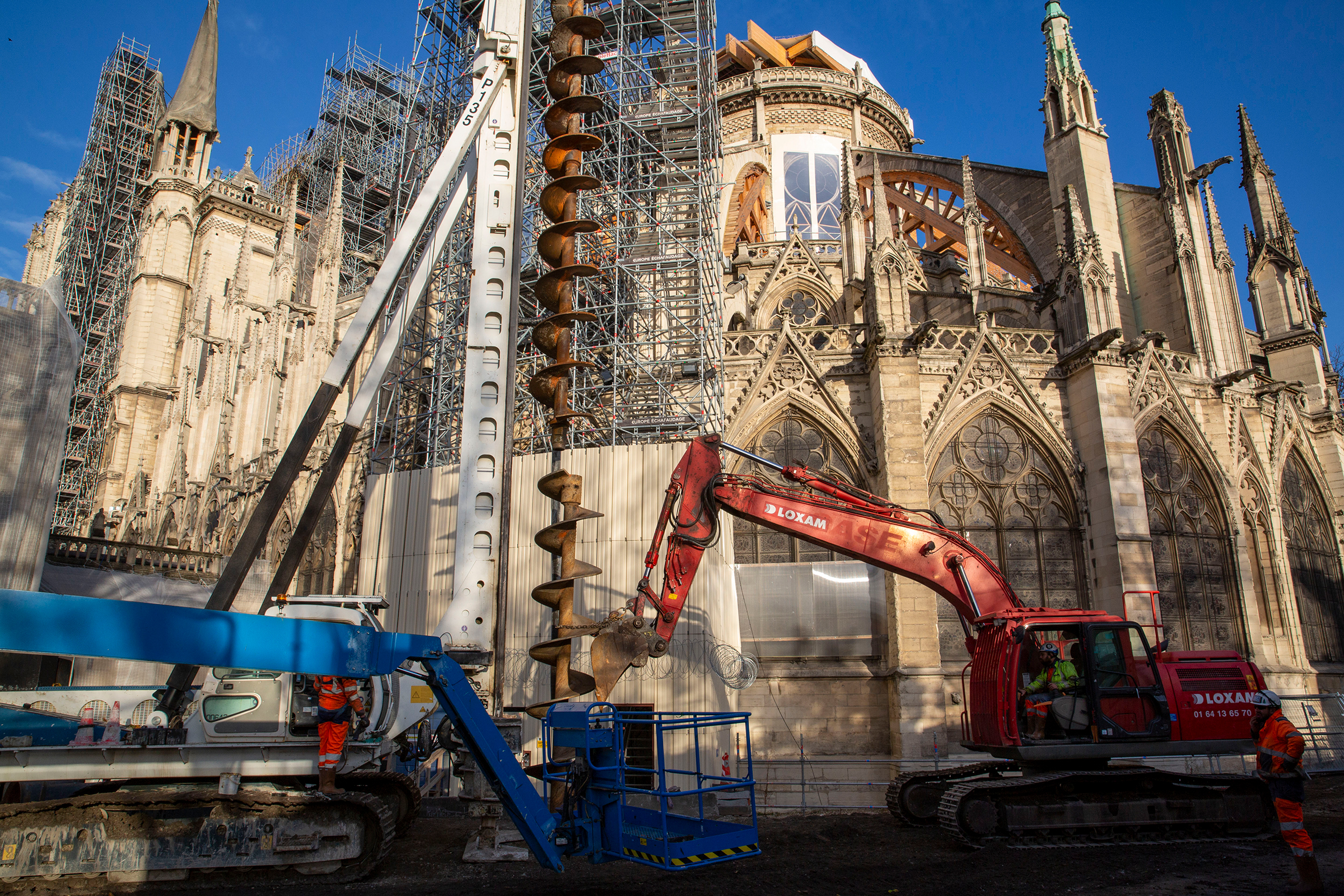

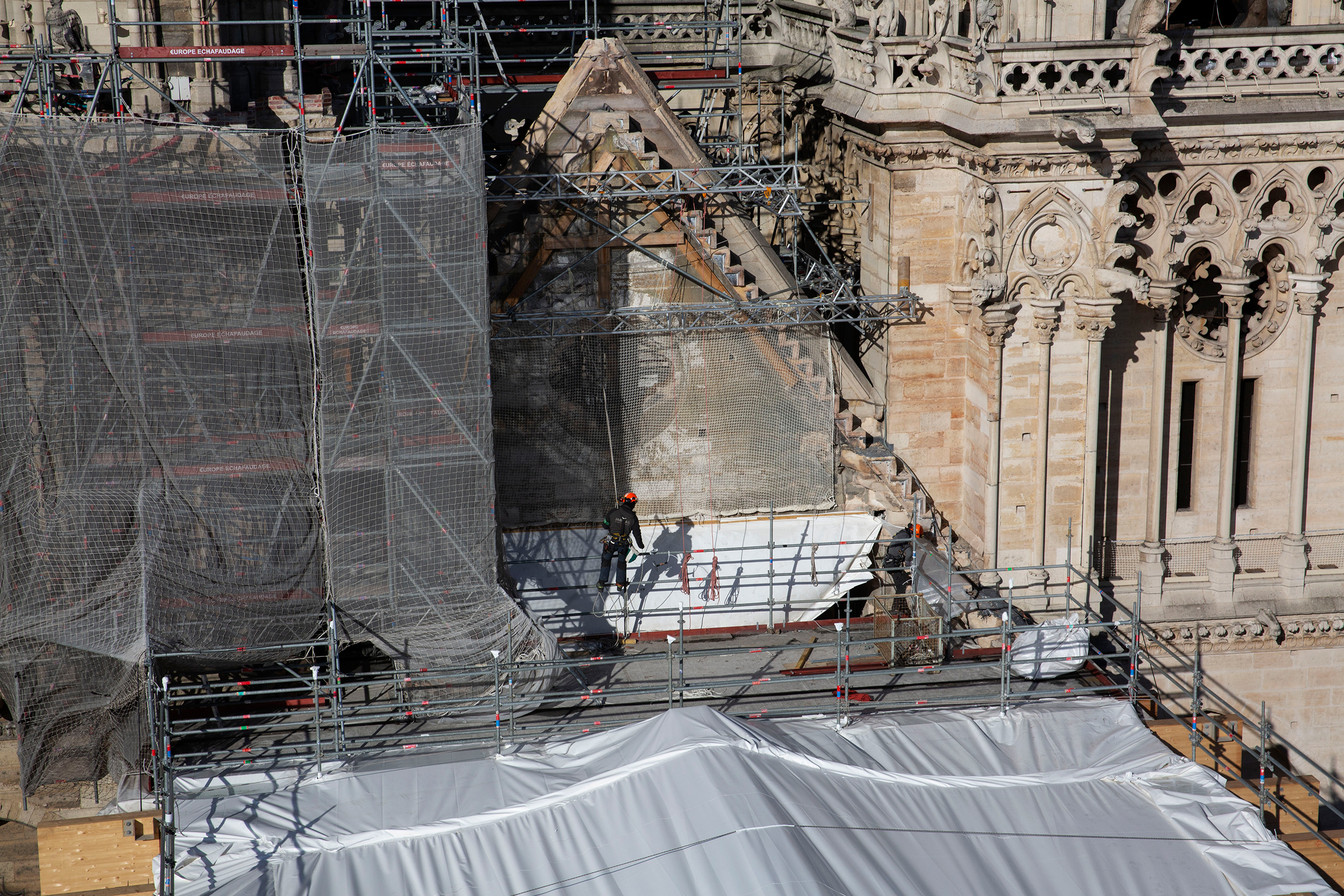
But it’s now clear that a true reopening of Notre-Dame will take far longer than the four-year time frame. “The 2024 [window] is very constrained,” says Stéphane Tissier, director of operations for Notre-Dame’s reconstruction. “The aim is to reopen the cathedral in 2024 even though the work won’t all be done,” he says. “The objective will be that that the public will be able to reenter in 2024.”
For now, no one knows when the team will even be able to return to continue restoration work. The artisans and architects hold daily video calls with Georgelin and Tissier, in order to plot out how it might be possible. The discussions include possibly drafting entirely new protocols, with demands for protective gear, and a debate over whether social-distancing regulations will be imposed on those working on the cathedral, whenever the national lockdown finally lifts. That would greatly complicate the close teamwork needed to dismantle the 40,000 metal pieces of twisted, molten scaffolding—an urgent task that has already been delayed several months, due to a series of storms and high winds, and as the building and the neighborhood have been examined for toxins from lead dispersed during the blaze, when the roof collapsed.
“We are working to organize to pick up the work in the most scrupulous sanitary, secure conditions,” Georgelin says, explaining how the coronavirus has forced him to reconfigure his plans. “It is out of the question to play with the security of people.”
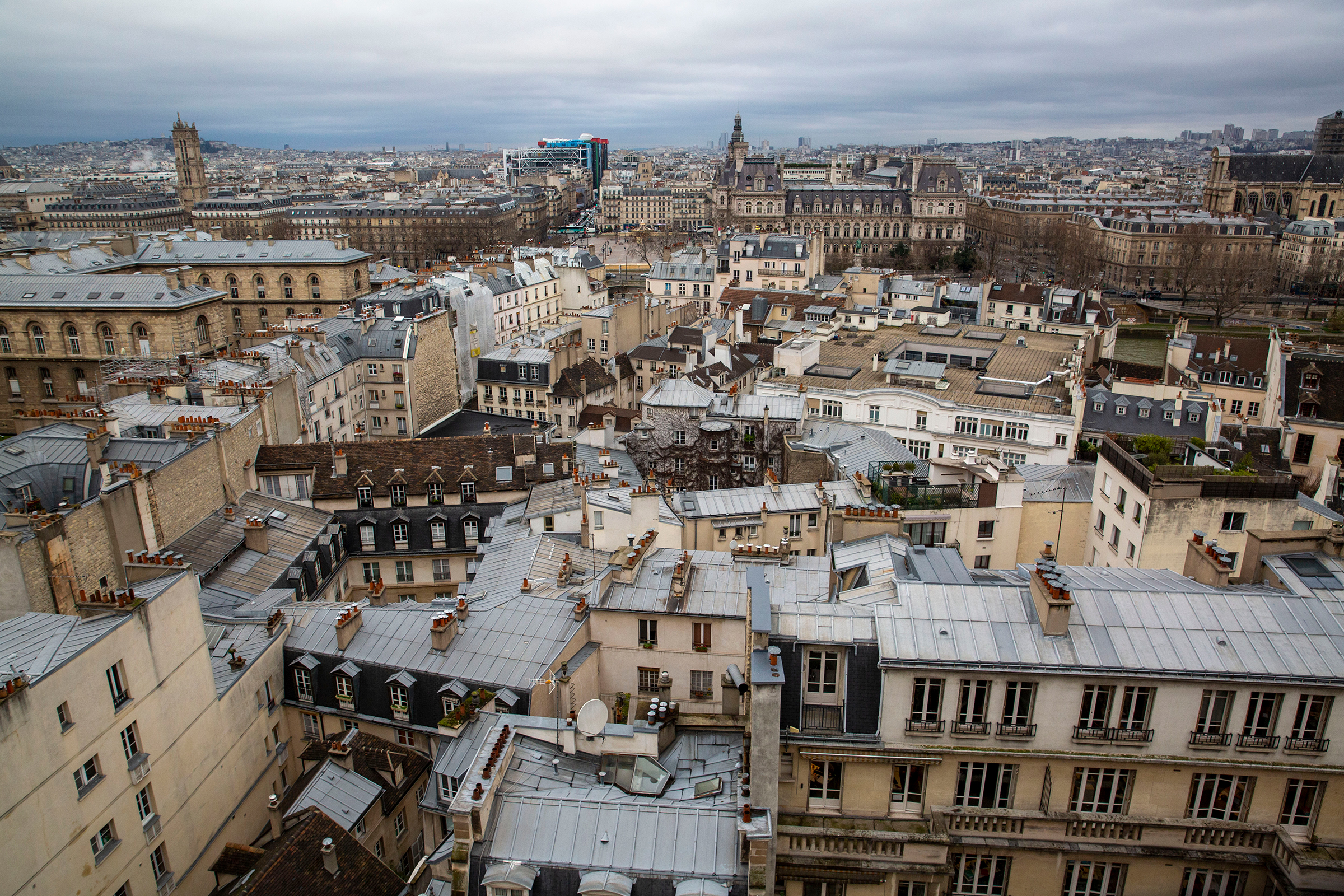
The virus hardly seemed an imminent threat on March 9, when Tissier led TIME into the cathedral to see how much work had been done, and how much still needed to be done. Indeed, whatever threat there was, was over lead pollution. Even before we entered through a side door into the cavernous, silent nave, some changes since I was last inside Notre-Dame in early July, about eight months earlier, were clear.
With concerns that dangerous quantities of lead particles from the collapsed roof had dispersed inside the cathedral when the roof collapsed on April 15, we were required to strip off our clothes before entering the cathedral, and then don disposable paper protective overalls and special boots, as well as face masks—an item that days later became almost impossible to find in Paris—and to take a shower in portable containers in the yard, before leaving the cathedral grounds at the end.
Last July, a pile of charred wood and burned metal—some barely more than scraps that had fallen to the ground on April 15—still sat in a pile in the middle of the nave. Remote-controlled robots shuffled in and out of the interior, picking away at the debris, piece by piece. Shelves with hundreds of pieces sit catalogued in tents in the front yard of the cathedral, where archaeologists sift through the wood, stonework, and bits of statuary.

Now the robots have completed their work, and the nave is clear and empty—a remarkable sight in a space typically jammed with hundreds of worshippers, and through which about 30,000 tourists walked every day before the fire.
For scientists and historians, the haul has offered a unique treasure trove—a chance that is almost unprecedented for those working on the restoration. The fire peeled away Notre-Dame’s epidermis, leaving the cathedral as exposed as a giant doll’s house. That has laid bare questions about the cathedral’s origins, the materials used, and even its updates, since it opened in about 1345. “It is a way of transforming this very sad event into something a bit positive,” says Aline Magnien, director of the national monuments research laboratory, or LRMH. “To learn something from the fire, and about the construction method.”
One year on, the salvaged scraps of wood, stone and metal have thrown up new mysteries—as well as challenging some long-held assumptions. Among those assumptions is the origin of the spectacular latticed wooden framework that covered the inside of the roof, until it went up in a blaze of smoke on April 15. The framework was known as the “forêt,” or forest, after the 5,000 oak trees Medieval artisans were said to have used to build it more than eight centuries ago.
Or that, at least, is what the history books said.
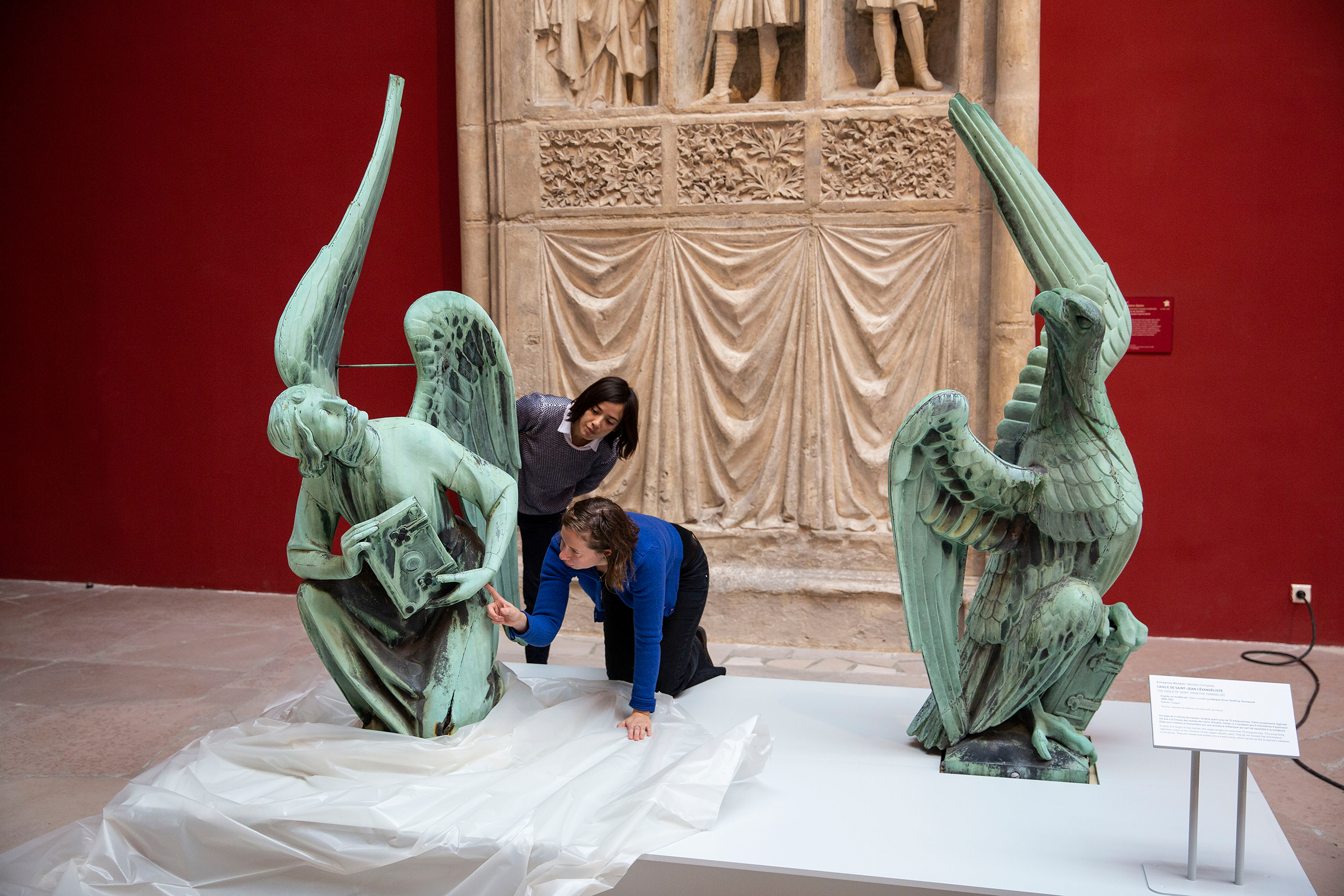

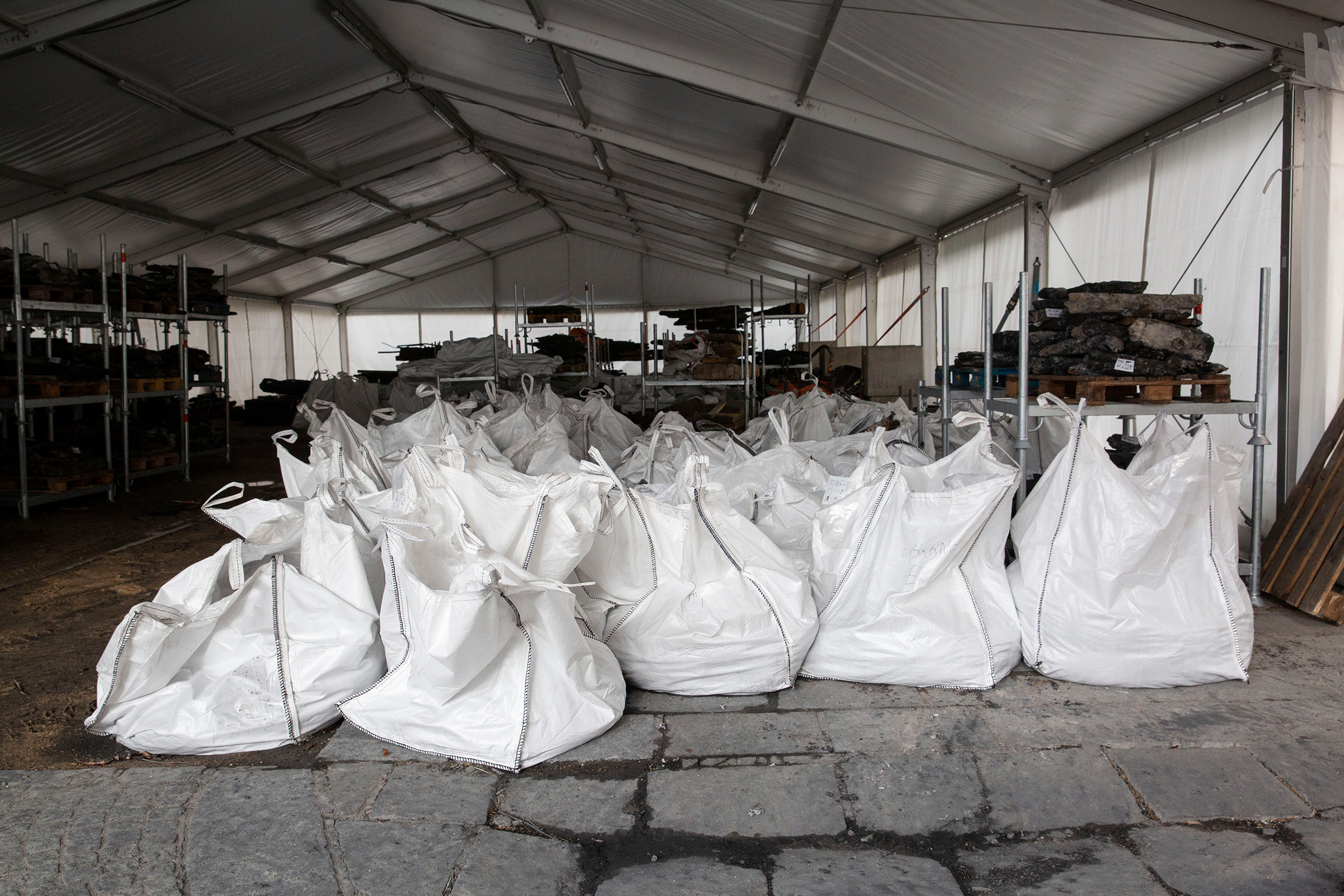
In fact, Magnien says months of examining the scraps of wood salvaged from inside the nave have suggested another story altogether. Scientists were able to date bits of wood, piecing together the true tale. Much of the framework, it turns out, originated in more modern times, and appears to have been patched together from time to time, over hundreds of years—much like any homeowner might repair leaks in the roof over the years. “Probably a great deal of the framework has been changed in the 17th, 18th, 19th century,” Magnien says.
The disaster also offers the restorers the ability to renew what was degraded long before the fire. Just two years ago, Notre-Dame was struggling to find enough funds for urgent repairs to its roof and timber. But the flood of emotions from the fire brought also a flood of money, giving the restorers a chance to go far beyond needed fixes, to a more sweeping restoration.
Astonishingly, almost nothing within the nave was destroyed in the blaze—including furniture, priceless tapestries and paintings, and centuries-old religious sculptures. None of Notre-Dame’s 113 stained-glass windows sustained damage, including the dazzling rose windows on the cathedral’s two transepts. For years, the colored glass has suffused the interior with a blue-pinkish color.
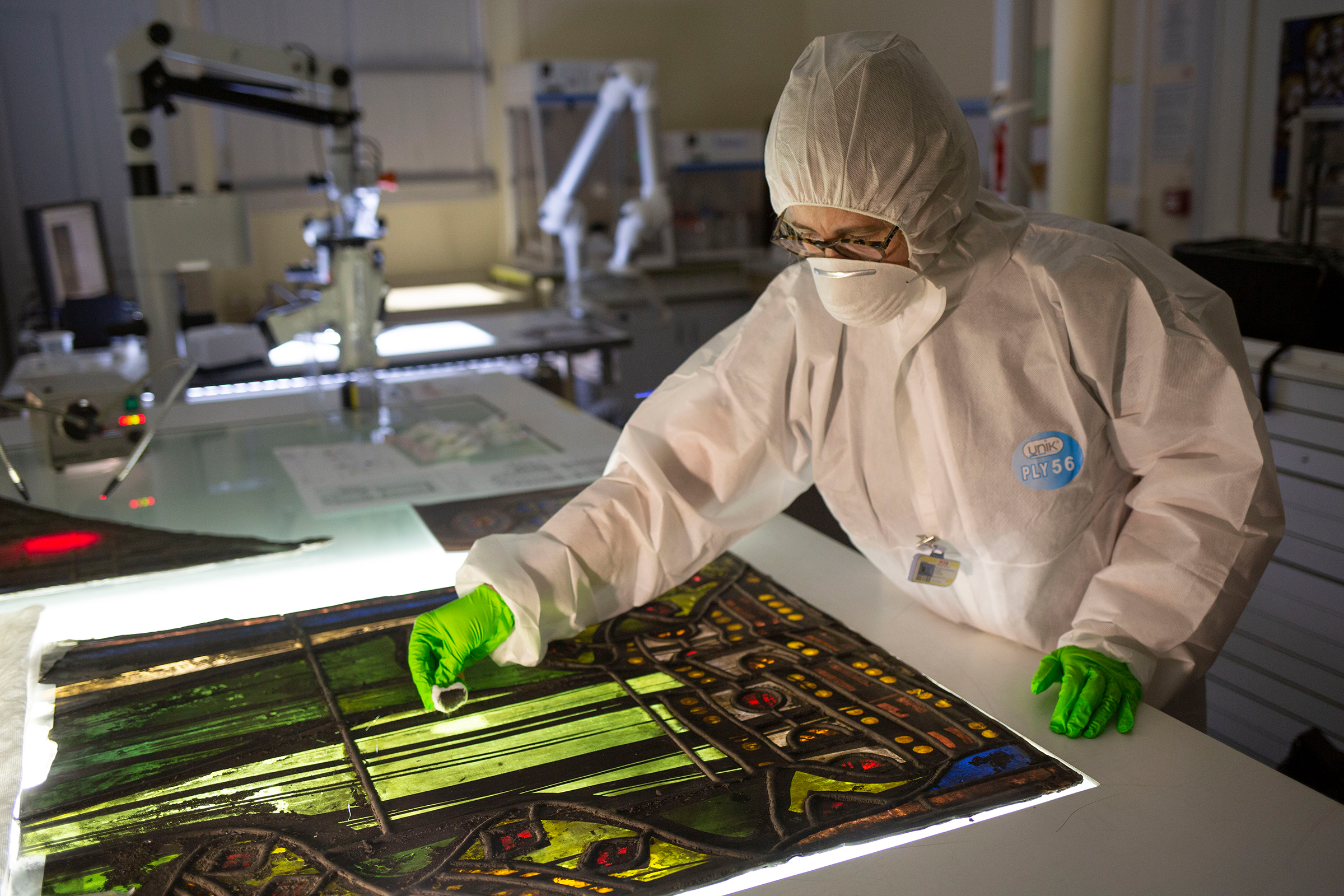


That hue might be quite different once Notre-Dame finally reopens. The windows that are accessible have been removed since the fire for their first cleaning in decades. In seven stained-glass workshops around Paris and elsewhere, specialists have begun testing what solvents to use to prize off layers of dirt—they call it “black gunk”—that has accumulated from thousands of candles being burned by worshippers, car smog from Paris’s clogged traffic outside, and some from the dust and smoke emitted during the fire itself. Once they settle on how to lift the dirt out, they say, the results should be remarkable. “They will be a lot more brilliant afterwards,” says Emma Isingrini-Groult, a restorer who coordinates the work on the windows. In general, she says, “there was a lot of luck in this fire.”
In fact, the most complicated task in reconstructing Notre-Dame is the one the teams faced even back in July: Dismantling twisted scaffolding—including about 10,000 metal tubes—that sits atop the cathedral, and which had been mounted over six months before the fire, in order for repairs to the roof and upper levels of the building to proceed; it’s believed that the work accidentally led to the short-circuit wiring that caused the fire.
Climbing the steep stone staircase of one of the cathedral’s belfry towers, I emerge on the roof. Below, there is the panorama of the Parisian skyline. But up close on the roof, the true scale of the challenge is stark: The tangled metallic labyrinth of the scaffolding, which still sits in the same state as it was last July. Until the scaffolding comes down—at least a four-month task—no real reconstruction can begin.
The risk of a mishap or accident is high indeed. A dropped metal tube could knock against the cathedral’s still-fragile structure, causing stones to fall. Or it could hit a worker hoisted hundreds of feet off the ground. “Dismantling the scaffolding is very, very delicate,” Tissier says, standing atop the roof, as we look up close at the twisted metal. “It is something that is very, very sensitive, and we need to proceed with it slowly and methodically.”
It could be weeks more before Macron lifts the coronavirus confinement, and Tissier and his team are able to return to work on the site.

For weeks, they had planned to clean the giant bells of the cathedral, and to ring them for Easter on April 13—perhaps repeating it again two days on April 15 to mark the first anniversary of the fire. Georgelin, the military general overseeing the reconstruction, tells me he believes it would be an important boost for the French. “It is a way to show that the cathedral is still alive,” he says.
But as Easter, and the fire’s first anniversary, nears, it is clear that the bells will not ring those days. Tissier says it would require changing the electricity and cleaning the bells—an idea that collapsed with the coronavirus lockdown. “It will not be possible.”
Instead, the team is now focusing on keeping the cathedral intact during its long lockdown. Wooden insets cut to the shape of the building’s arched flying buttresses have stopped the walls from shifting, while the cloth covering on the roof protects the interior from months of rain, wind, and beating sun. Still, the specialists—now confined in their homes—say they will not rest easy until the scaffolding has come down, allowing them to begin the long work on fixing the ravaged roof and attic. “A Gothic cathedral is like a Mikado set,” Georgelin says. “Until the last element has not yet been withdrawn, we cannot say we have won, and the cathedral is safe.” That day remains some time off.
More Must-Reads from TIME
- Cybersecurity Experts Are Sounding the Alarm on DOGE
- Meet the 2025 Women of the Year
- The Harsh Truth About Disability Inclusion
- Why Do More Young Adults Have Cancer?
- Colman Domingo Leads With Radical Love
- How to Get Better at Doing Things Alone
- Michelle Zauner Stares Down the Darkness
Contact us at letters@time.com
